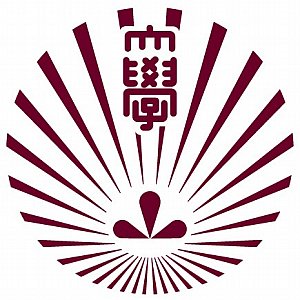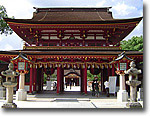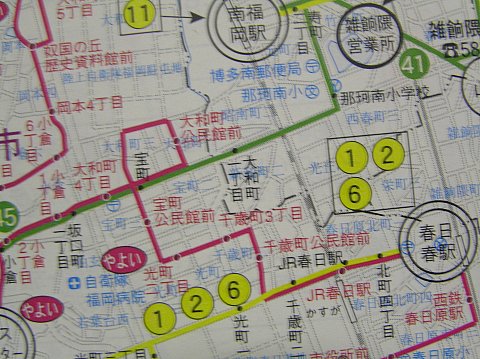Published by admin on 02 Dec 2008
International Symposium on Earth Science and Technology 2008
International Symposium on Earth Science and Technology 2008 was held in Nishijin- Plaza Fukuoka
Published by admin on 02 Dec 2008
International Symposium on Earth Science and Technology 2008 was held in Nishijin- Plaza Fukuoka
Published by admin on 12 Oct 2008
Department of Geodesy and Geomatic Engineering, Gadjah Mada University is going to celebrate its 50th anniversary in 2009. A series of events has been prepared to be held in 2008 and 2009 to celebrate this special moment. These events are:
2008 Agenda:
The opening ceremony
Painting and map coloring competition.
Navigation and GPS Tracking competition
Talkshow and Car Navigation Demo
Training and refresher courses.
2009 Agenda:
National seminar
Alumni meeting and gathering
Geodesy-Geomatic research and technology expo
50 years of Geodesy and Geomatic book launching
Geoinformatics workshop
Published by admin on 08 Oct 2008
Asia GIS Conference, the bi-annual conference was held in
This event was the seventh conference in the Asia GIS conference series and the first in
Five presenters from the Environmental Geo-Technology lab, Faculty of Engineering,
Published by admin on 04 Apr 2008
International Federation of Surveyors (FIG) Conference
International Society for Photogrammetry and Remote Sensing (ISPRS) Conference
Twelfth Biennial USDA Forest Service Remote Sensing Applications Conference
American Society for Photogrammetry and Remote Sensing (ASPRS) Conference
GIS Conference and Events Conference
ASIA GIS Conference
Map Asia Conference
ESRI International User Conference
International Workshop on Earth Observation and Remote Sensing Applications
3rd International Workshop on 3D Geo-Information
Published by admin on 04 Dec 2007
 The 5th International Symposium on Earth Science and Technology is held in
The 5th International Symposium on Earth Science and Technology is held in
The symposium is attended by experts and researchers from Kyushu University, Gadjah Mada University-Indonesia, Bandung Institute of Technology-
Published by admin on 26 Nov 2007
 Today’s Dazaifu is regarded as the well known tourist destination in
Today’s Dazaifu is regarded as the well known tourist destination in
Visiting this historical site on Friday, Nov 23, has reminded me to an old city of
Back to Dazaifu. There are numbers of historical sites which reflects to the ancient history of Dazaifu, including ruins of the Dazaifu itself, ruins of Mizuki, ruins of Onojo,
Dazaifu Tenmangu Shrine is dedicated to the Michizane Sugawara, “the God of Literature”. In 901, Sugawara was abruptly exiled from
Ruins of Dazaifu-Seicho (Dazaifu Government Office). Dazaifu-Seicho, also known as “Tofuro”, was once the place of the government office for entire
Published by admin on 19 Nov 2007

A map does not mean “only a map”, only a picture that visualizes location of objects on the earth. For me, a map means everything; everything related to geospatial information and its related attribute data. A map is a guidance that helps us to understand a place and to be well oriented geospatially.
Every time I go to new places, I always try to find a map of the place beforehand, by buying a printed map if it is available in shops, or by searching digital maps on the internet as well as visit google maps website. Few years ago, before visiting
However, having a map in hand does not always mean that you will be well oriented in a
From this instance, I then realized that in toponimy (i.e. the map lettering and naming systems) one of the key factors in order maps are readable and understandable is language. The
Published by admin on 30 Oct 2007
The second university summit was hosted by
The second University Summit is part of an extensive program of events culminating in Kyushu Universit’s centennial anniversary in 2011. The summit highlighted the theme of “
In this event,
Published by admin on 22 Oct 2007
 “You have to go to the other planet!” Those are the words spoken by my colleague to me when he knew that I was accepted to study my doctoral degree in Malaysia few months ago; as a courteous response of his disagreement if I study in that country. And now, his words come true! Yes, I’m now living in the other planet named JAPAN! Maybe the words he said few months ago was a “doa” (words of worship) for me. Only Alloh knows.
“You have to go to the other planet!” Those are the words spoken by my colleague to me when he knew that I was accepted to study my doctoral degree in Malaysia few months ago; as a courteous response of his disagreement if I study in that country. And now, his words come true! Yes, I’m now living in the other planet named JAPAN! Maybe the words he said few months ago was a “doa” (words of worship) for me. Only Alloh knows.
Few months later, I met my Dept Geology colleague (he at that time was a HiLink Research Project official who supervises my department project funded by JICA) in my office. He congratulated me for my successful achievement in getting the Monbusho scholarship. I always remember his words. He says, getting a Japanese scholarship are very difficult for most people. But either way, it is seems so easy for some people.
Indeed, I feel my way to go to “the other planet” was very easy. Alhamdulillah, all the praise only goes to Alloh, my GOD, my KING, my GUARDIAN, my GUIDANCE. And thanks to my beloved wife who finally agree with my decision to study in “the other planet”.
Published by admin on 25 Sep 2007
Every people has a special day or even more than one. For me, today is one of my special days. WHY?……..
Today,
Today, September 25th 2007, is my special day because today is “11” days away from the date that I have to go to Kyushu University, Japan for doing my PhD. Number “1” that composes “11” is magical number for my family because my son was born on day 11, month 1 and year 1 (2001).
Today,
And today,
Alhamdulillah…………….